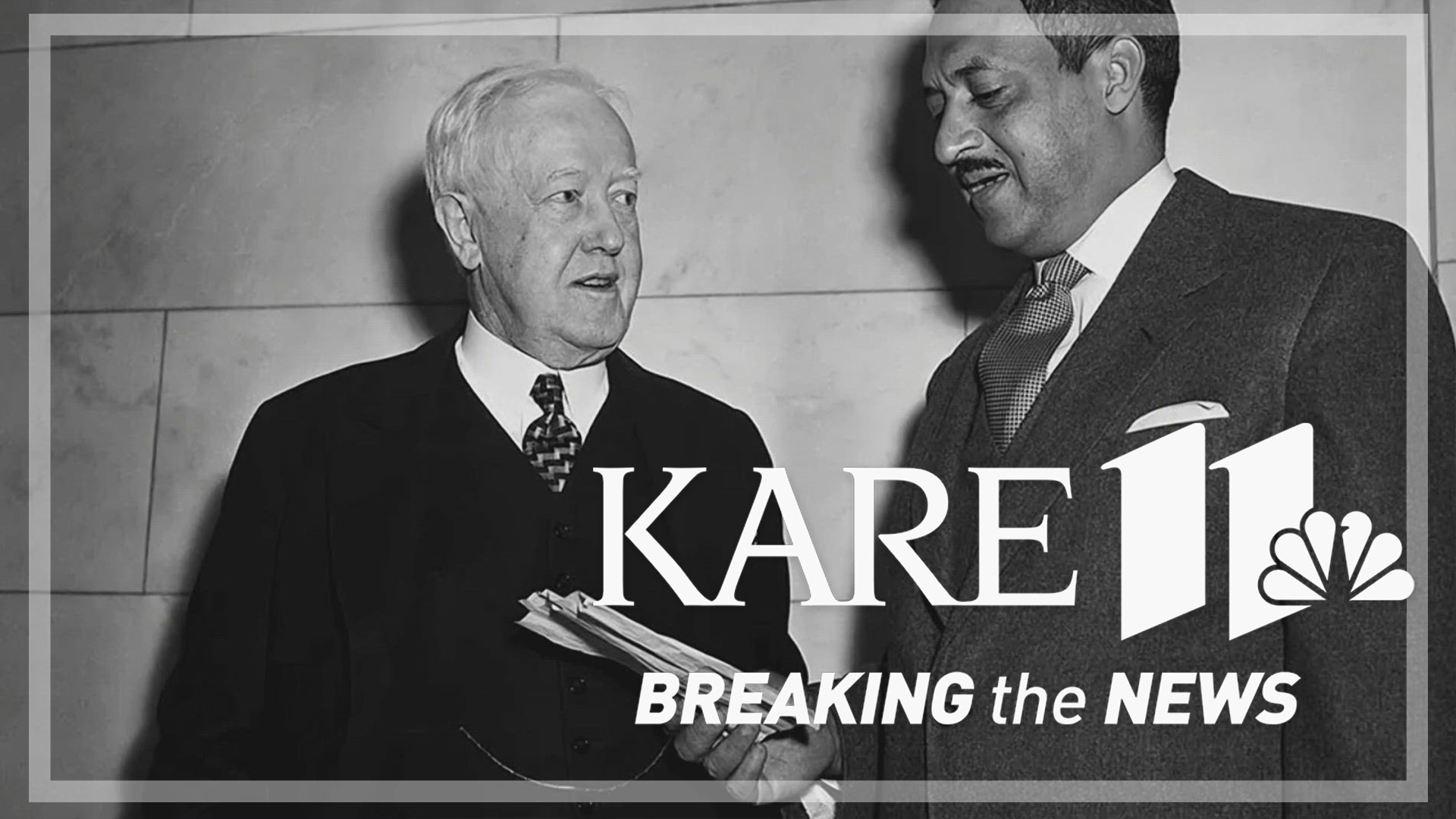MINNEAPOLIS — On May 17, 1954, a unanimous Supreme Court decision in the Brown vs. Board of Education case made it unconstitutional for public schools to separate children based on race.
Seventy years later, artificial intelligence is bringing the case to life in a new way. Scholars say it comes at a critical time. In many areas, including several Minnesota counties, schools have steadily re-segregated.
Brown Revisited
Within seconds of visiting the new, interactive multimedia website called Brown Revisited, you begin to hear the pivotal arguments and opinions that shaped the case in 1954, despite the fact that audio recordings weren't allowed in the court until 1955.
The site, and AI audio, was created by the Oyez Project, a multimedia archive devoted to making the Supreme Court of the United States accessible to everyone.
"We heard the first audio clip and were blown away," said Tim Johnson, a University of Minnesota Professor, Supreme Court scholar and advisory to the Oyez Project. "We knew at that point that we had something where we could really, truly, bring history to life."
In a video explaining how the A.I. audio came together, Spooler explained how professional voice actors were used to read actual transcripts from the case. They then used snippets of real, historical recordings from the Supreme Court Justices and attorneys, such as Thurgood Marshall, to clone their voices and overlay them using A.I.
Kent Erdahl: "Universities have spent a lot of time trying to police A.I. for obvious reasons, but do you think that this type of technology also needs to be embraced?"
Tim Johnson: "One hundred percent. If you can use this technology for good, then we should use it for good. Look, we know we have deep fakes, whether it's a deep fake of Joe Biden or a deep fake of Donald Trump. We're trying to do 'real fakes.' We're not trying to fake you out and make Thurgood Marshall say something he never said. We just want to put his voice to something he actually said so you can hear him during a time in history when you, quite literally, couldn't hear him."
And now that we can hear them, Johnson says he's already seen how it helps students - and even himself - better understand the case.
"We know that Brown is famous," he said. "We know that it says that we're going to let little African American children go to school with little white American children. But that's not (the same as) hearing Thurgood Marshall's voice. That's not hearing John W. Davis' voice arguing in favor of segregation. That's not hearing Chief Justice Warren announce the opinion that says, 'The doctrine of separate but equal has no place. Separate educational facilities are inherently unequal.'
This historical aspect of what we're doing here, I think, is a complete gamechanger for teaching about the law – teaching about the Supreme Court – to students across the country."
It also comes as many students find themselves in schools that have grown more segregated.
Though states stopped separating school children based on race 70 years ago, socioeconomics and other factors have caused segregation to grow across the country, and the academic consequences for marginalized students have too.
"What we've seen happen in recent decades is what we refer to in the legal community as de-facto segregation," Johnson said. "It is in our faces, it is here in Minnesota and it's not just in the Twin Cities, there are some highly segregated school districts in Northern Minnesota as well, where it's between Native American students and the rest of the communities.
So the issues here - bringing Brown back to life – is going to make us think about these cases, think about how our State Supreme Court is ruling, think about how our school districts should deal with these issues."
Late last year, the Minnesota Supreme Court said that de-facto segregation could be unconstitutional even if the state didn't cause it. But proving it would require evidence from parents showing the segregation itself is a substantial factor in harming their kids education.
Watch more local news:
Watch the latest local news from the Twin Cities and across Minnesota in our YouTube playlist:
WATCH MORE ON KARE 11+
Download the free KARE 11+ app for Roku, Fire TV, Apple TV and other smart TV platforms to watch more from KARE 11 anytime! The KARE 11+ app includes live streams of all of KARE 11's newscasts. You'll also find on-demand replays of newscasts; the latest from KARE 11 Investigates, Breaking the News and the Land of 10,000 Stories; exclusive programs like Verify and HeartThreads; and Minnesota sports talk from our partners at Locked On Minnesota.
- Add KARE 11+ on Roku here or by searching for KARE 11 in the Roku Channel Store.
- Add KARE 11+ on Fire TV here or by searching for KARE 11 in the Amazon App Store.
- Learn more about the KARE 11+ app for Apple TV in the Apple App Store.
- Learn more about KARE 11+ here.

